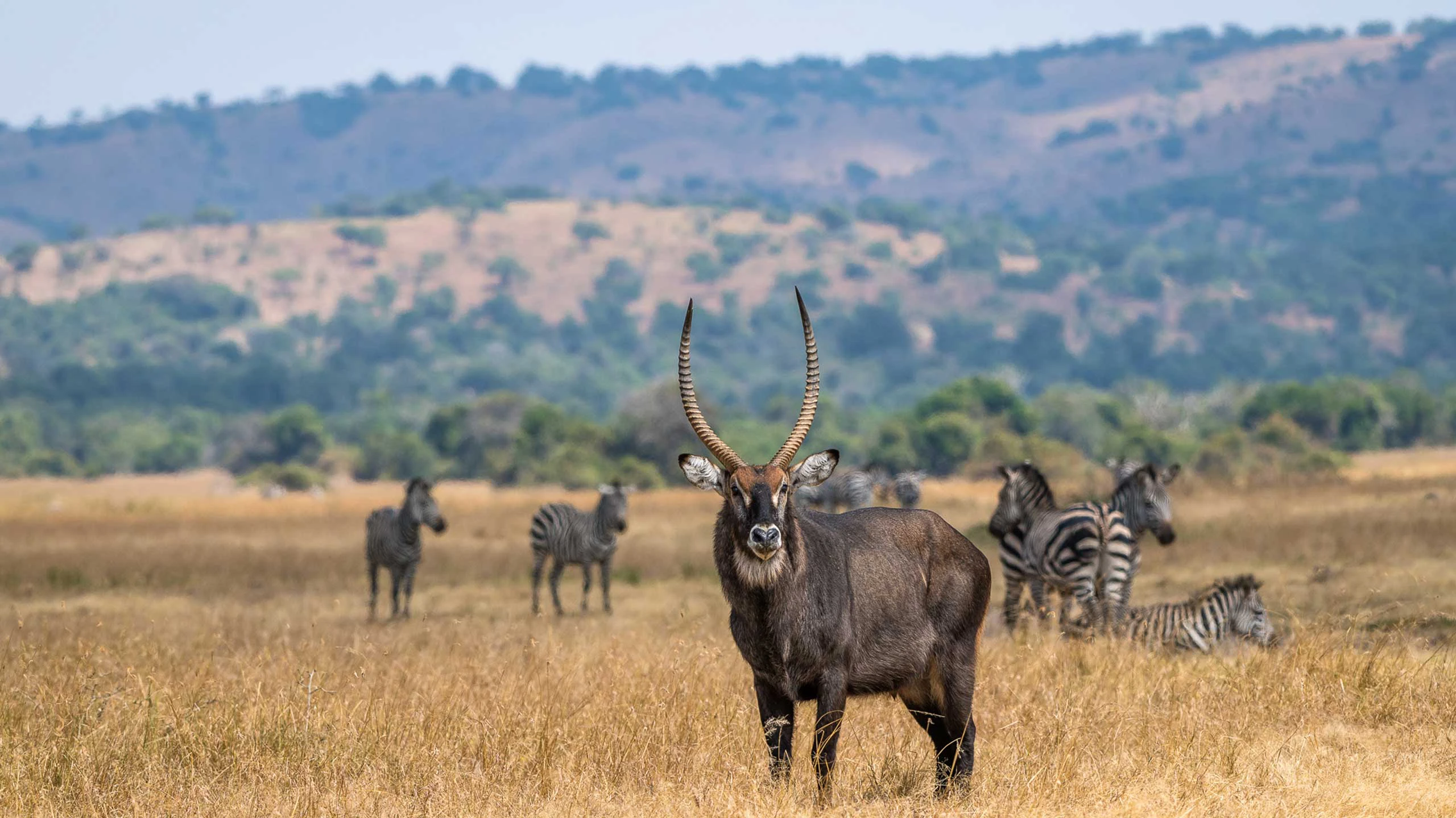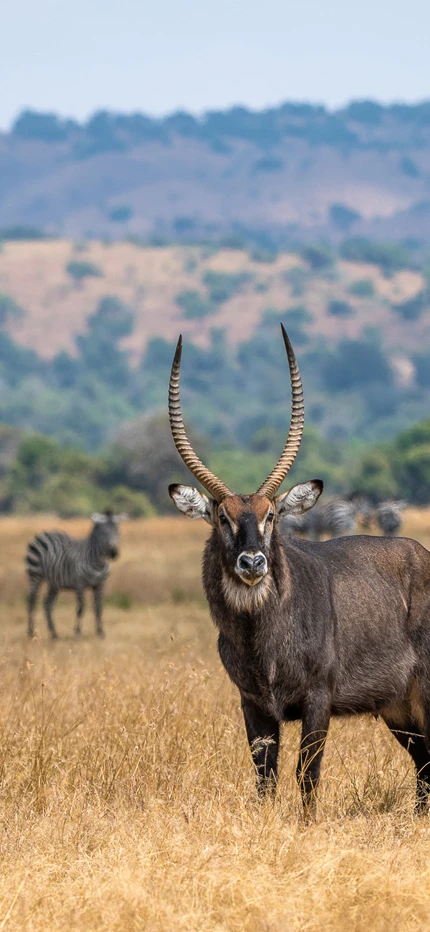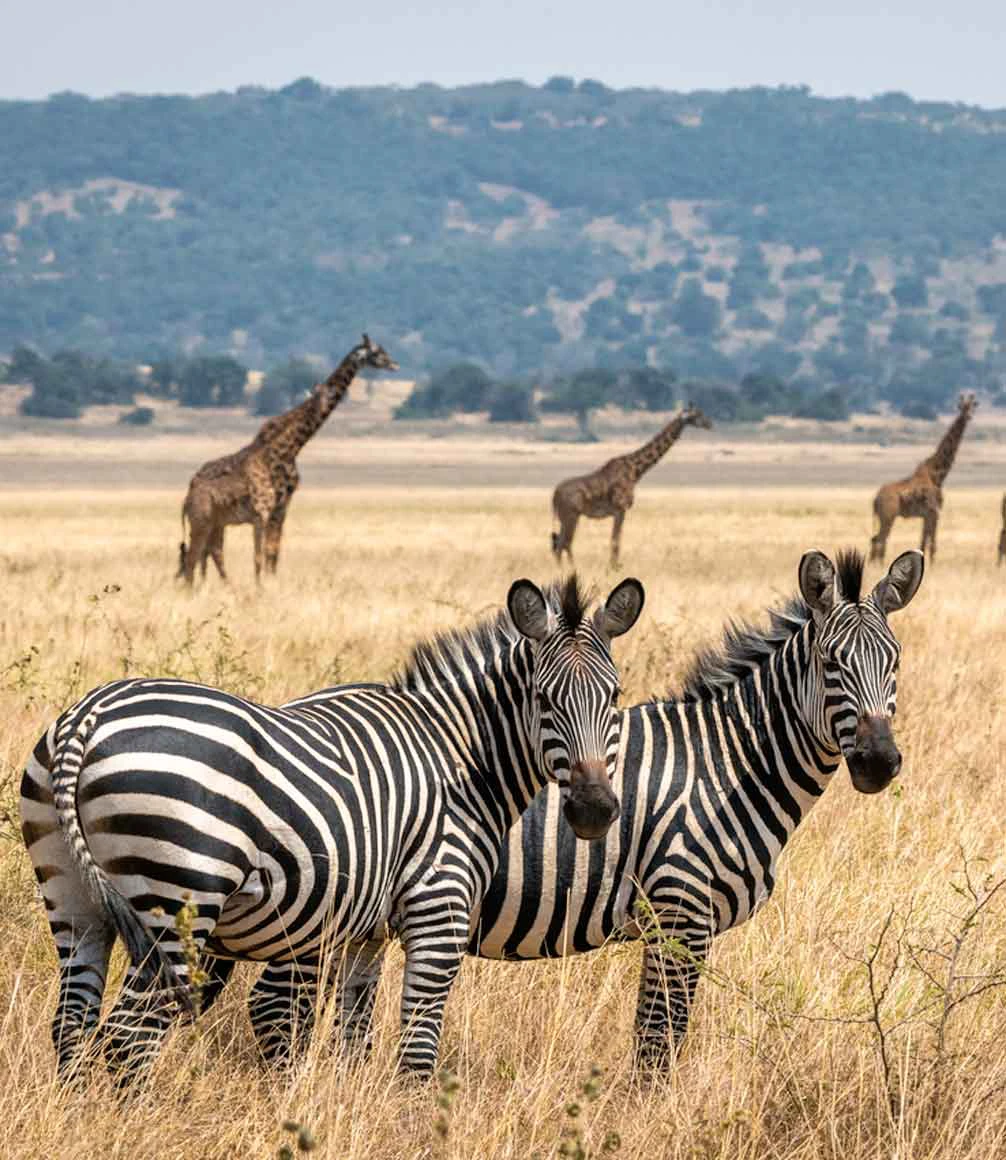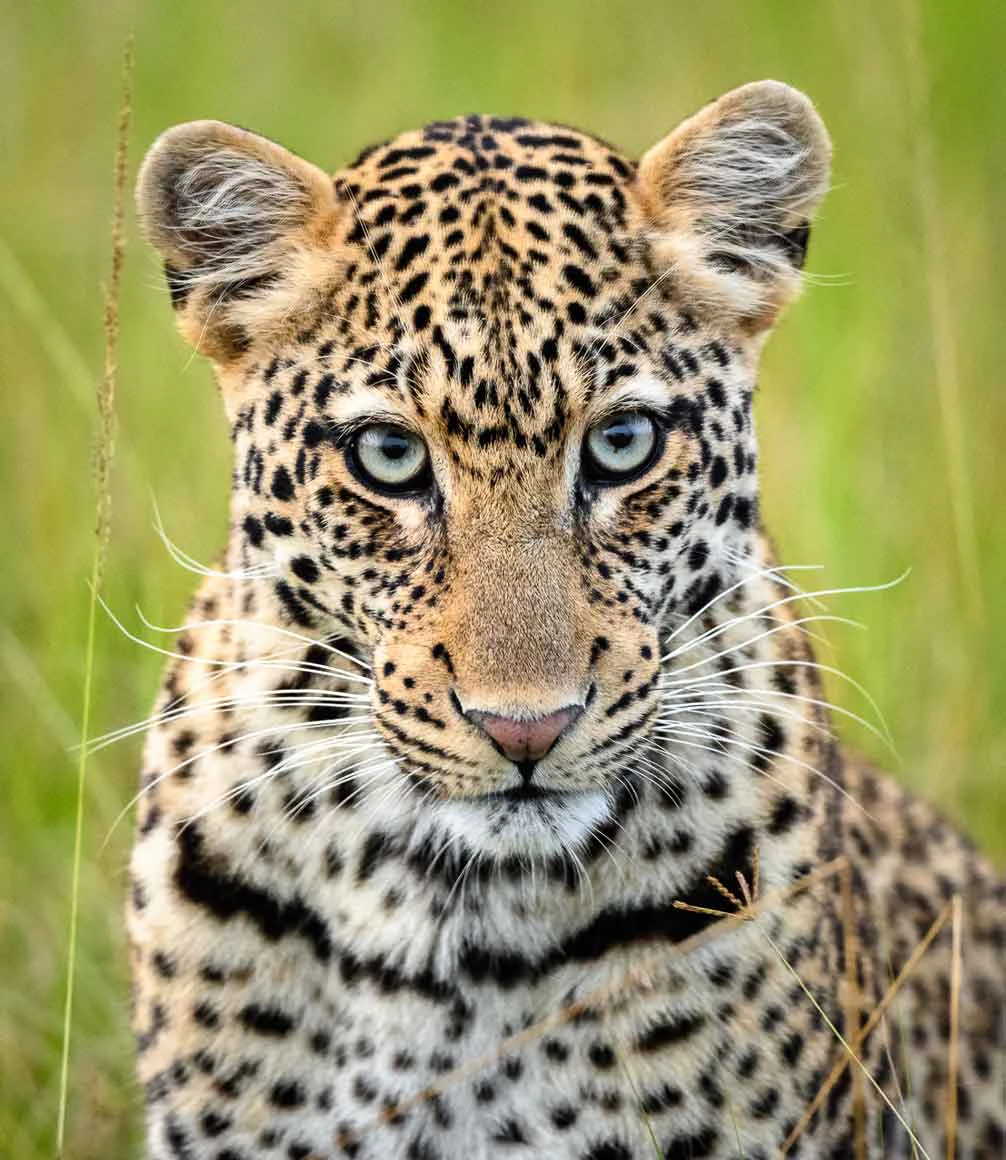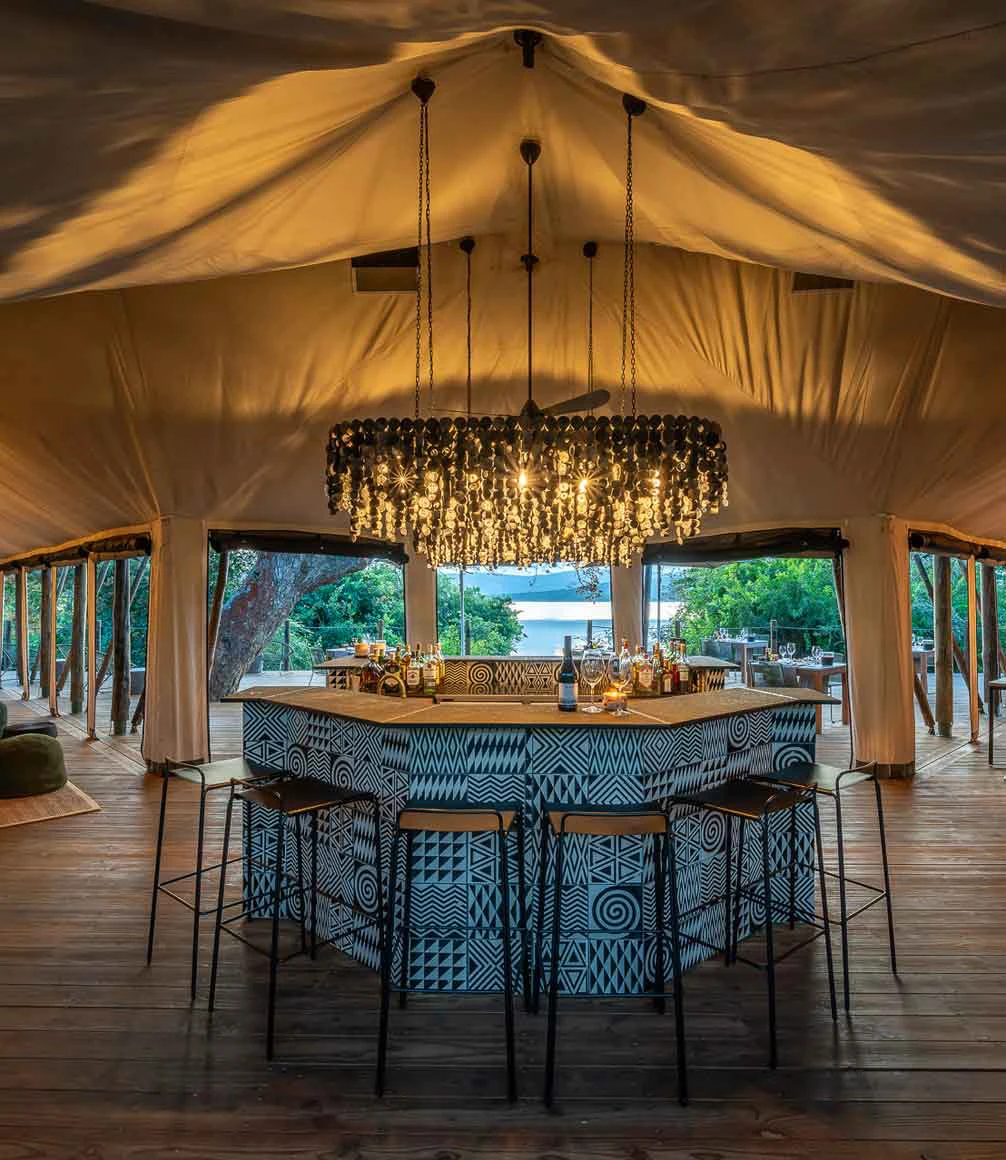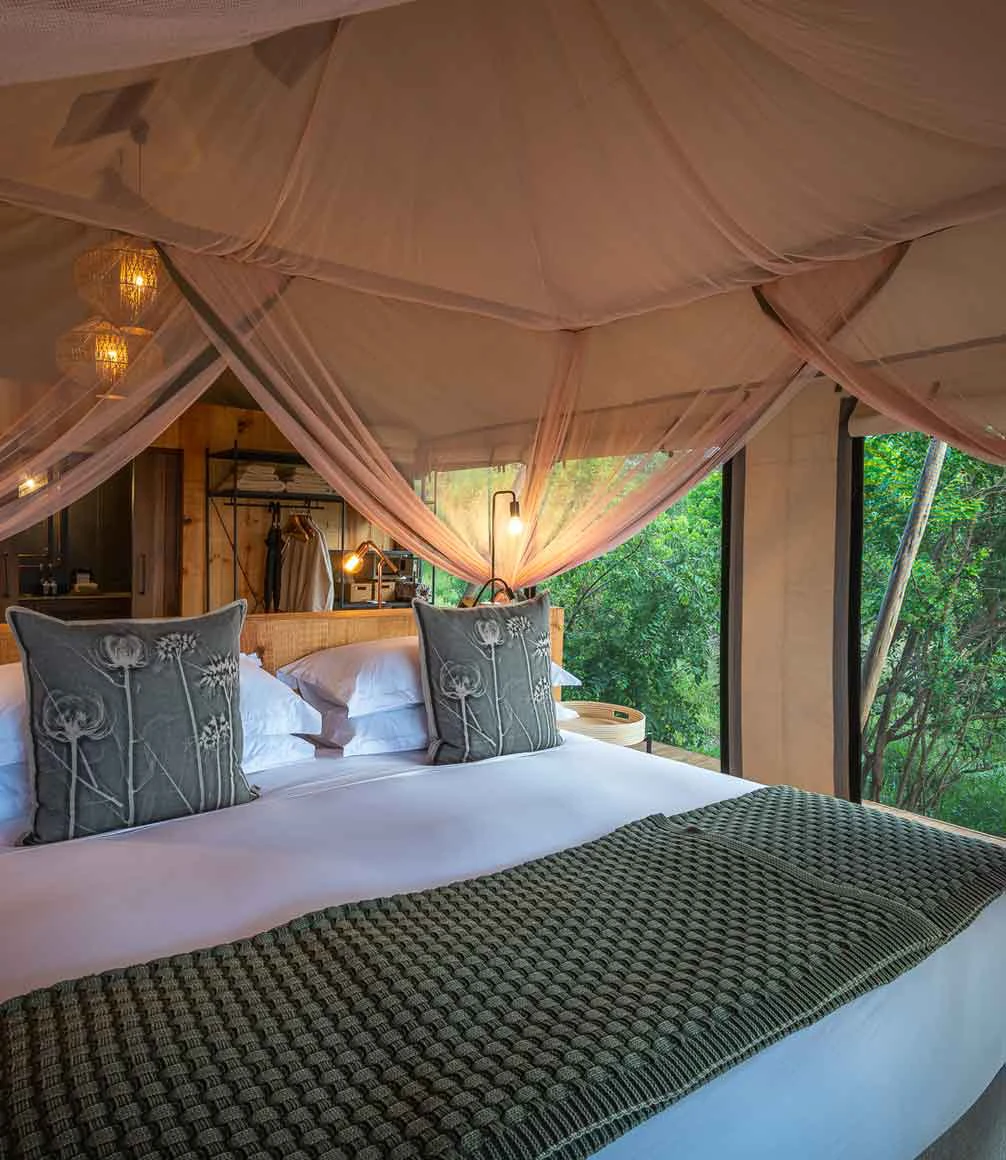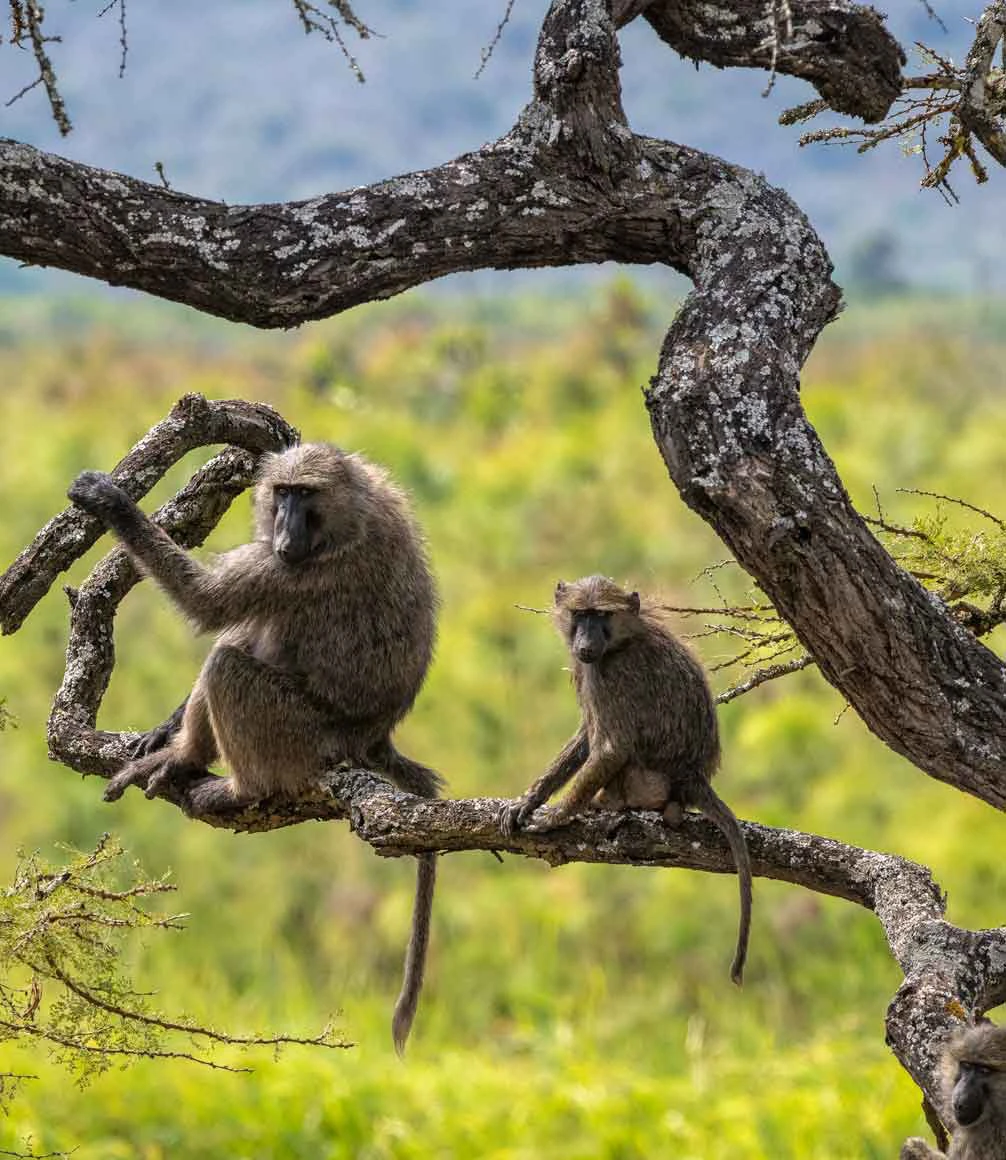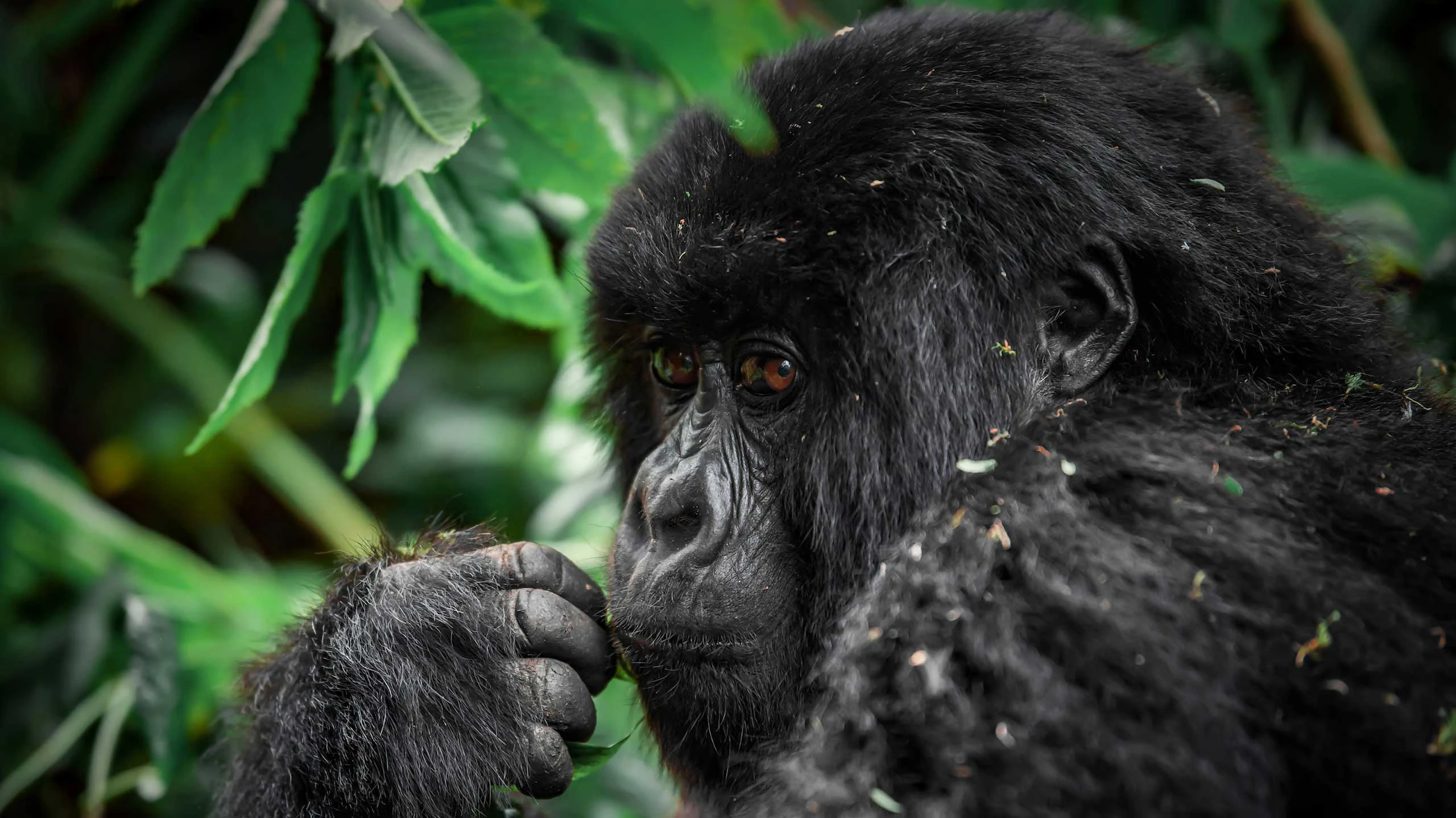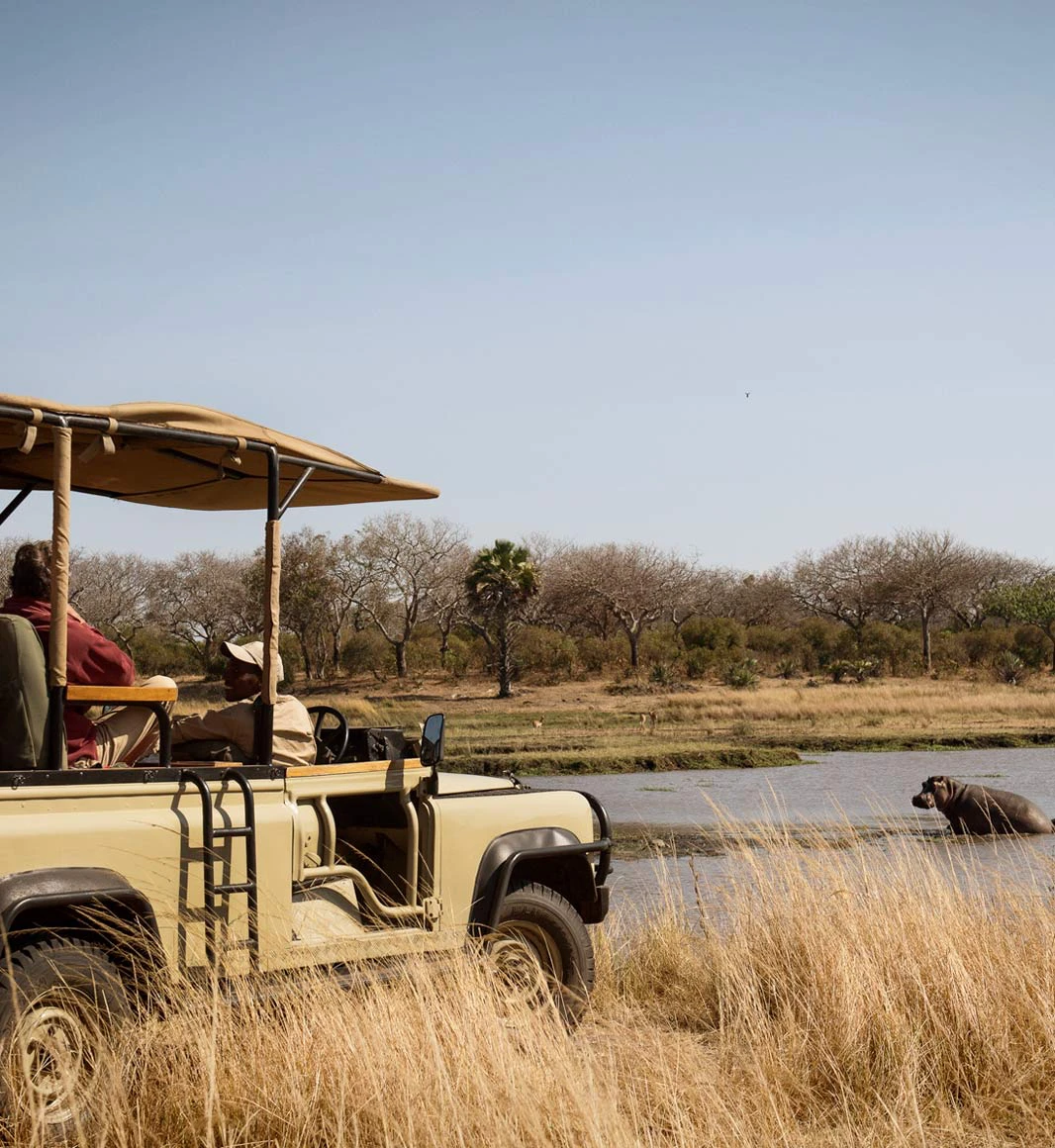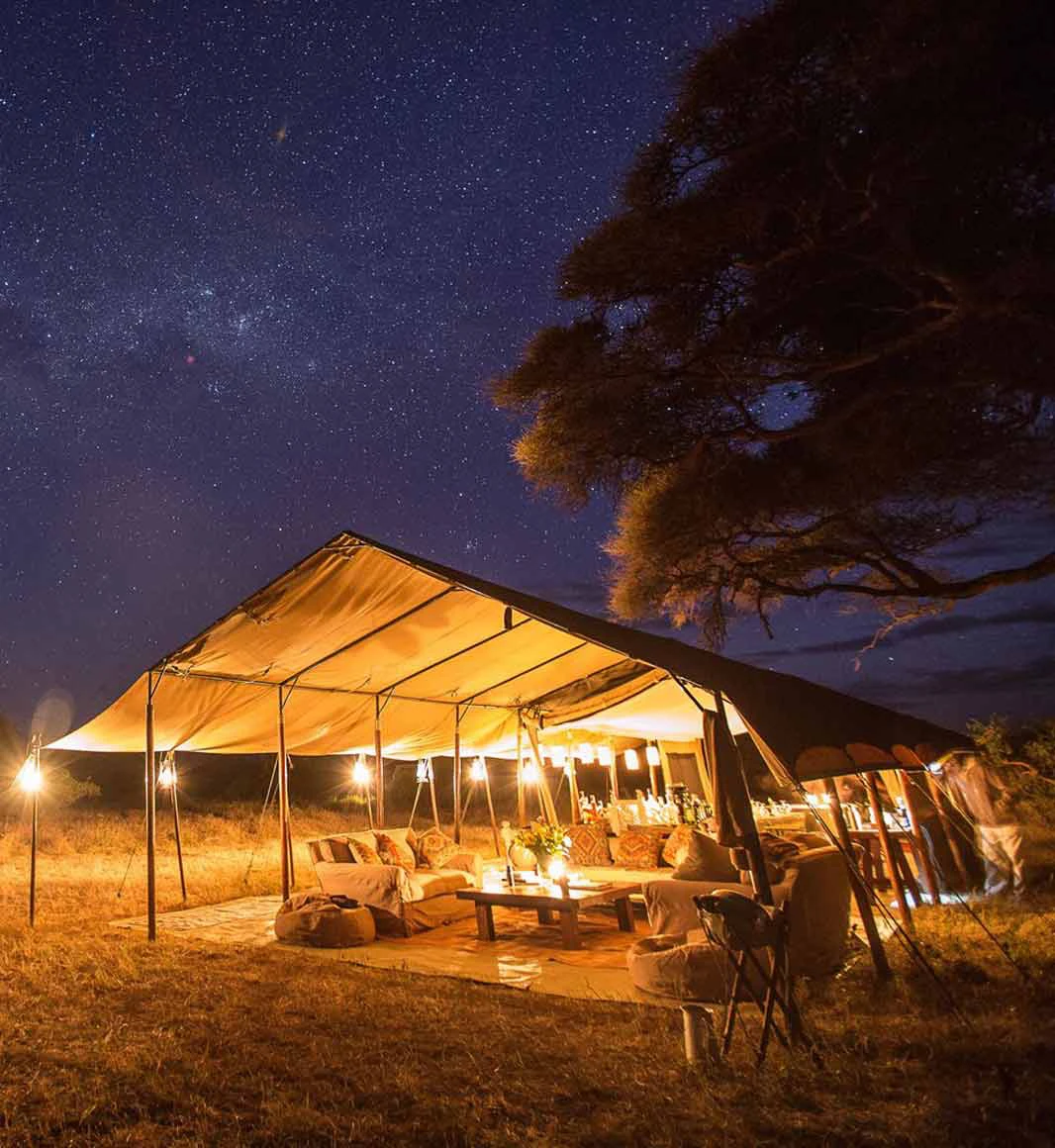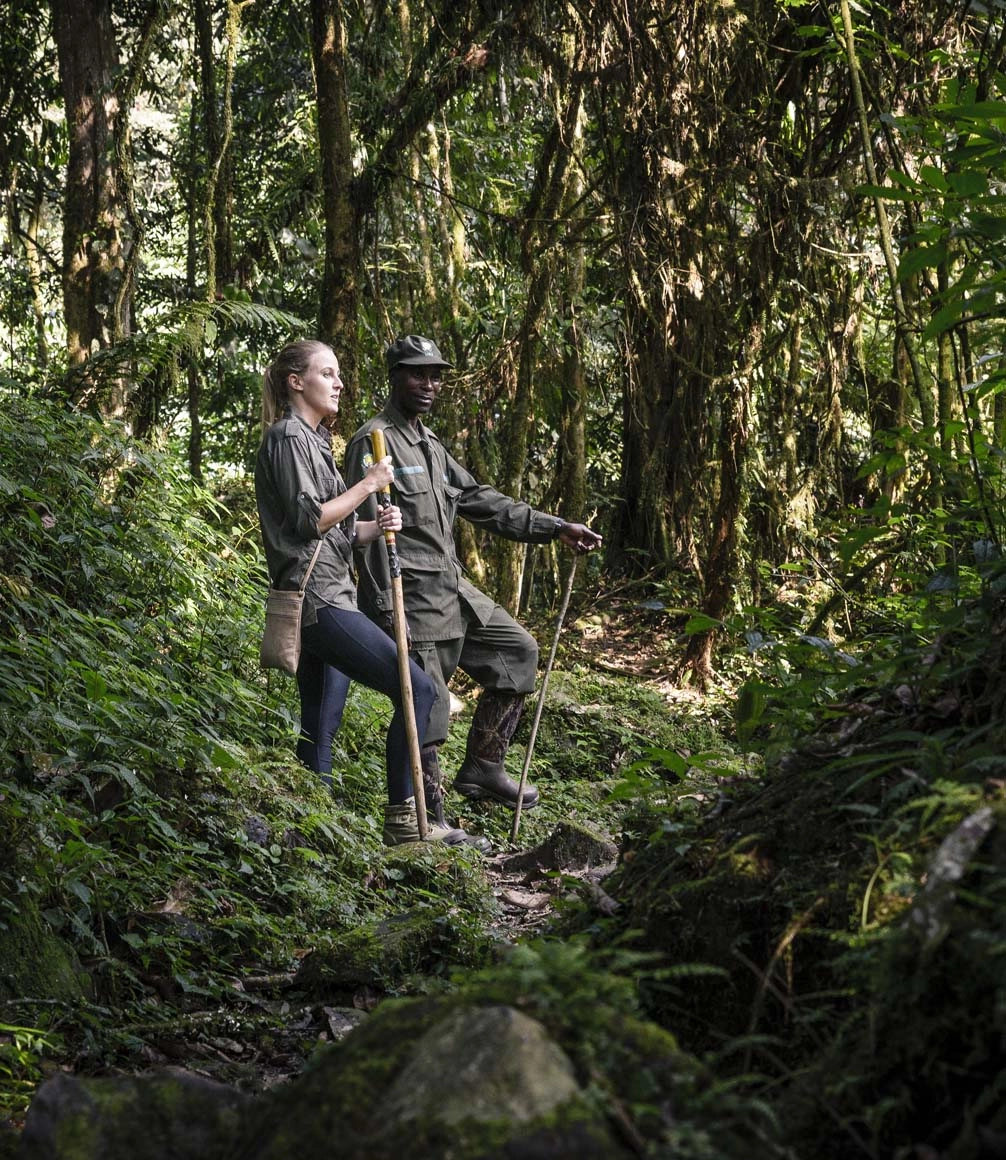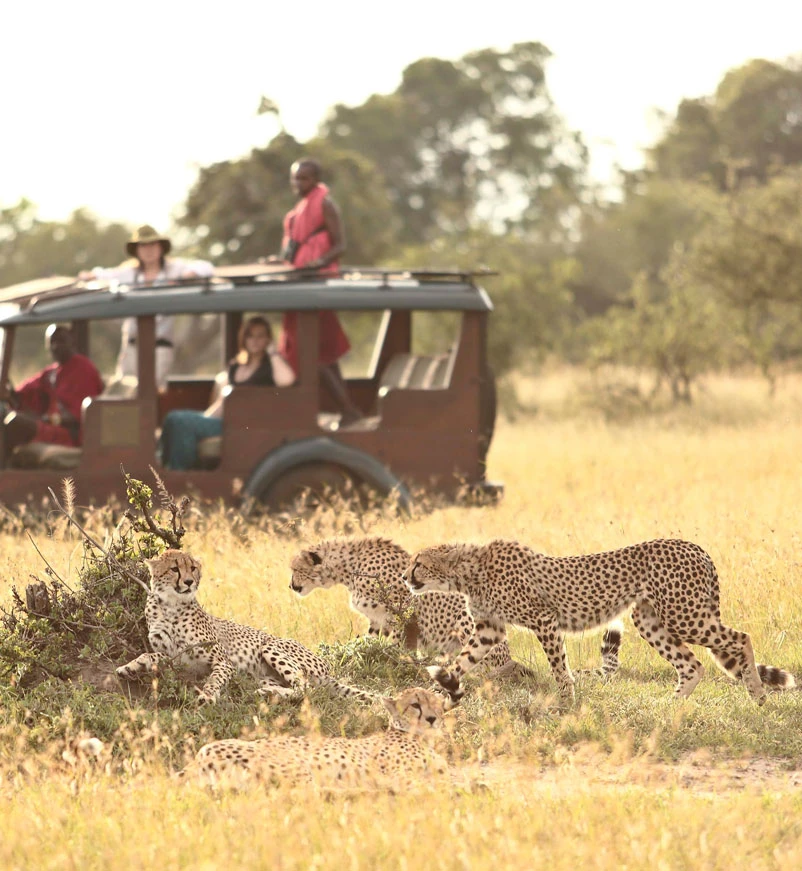A luxury safari in Akagera: Rwanda’s premier wildlife destination
Zebra are grazing peacefully on the open plain. Every so often one looks up, listening intently. In the distance, a herd of elephants amble across the grasslands, occasionally lifting their trunks to swipe at a tree’s branches. A large number of cape elands and roan antelopes are dotted across the verdant terrain, whilst a giraffe keeps a watchful eye on her calf as they become visible amongst the trees.
Watching the abundance of iconic species roam across the African landscape is an experience you’ll never forget. What makes this particular scene so impressive is the story behind it: the restoration of wildlife habitats that transformed this park into the most extraordinary conservation success story in Rwanda.
Wildlife conservation & the Akagera success story
This relatively small country in East Africa has undergone a major transformation over the last few decades – a remarkable recovery since the horrifying genocide in 1994. Today Rwanda is a well-developed, innovative country where citizens regularly contribute towards the upkeep of the cleanest country in Africa. Boasting one of the most impressive wildlife conservation stories from across the continent, this is the perfect destination to embark on a remarkable ‘Big Five’ luxury safari experience.
Highlights of a safari in Akagera National Park
"With over four hundred square miles of endless terrain varying from vast lakes to woodlands and lush wetlands, this iconic park offers an ideal safari experience with prime viewing of Africa’s famous predators."
The ultimate Big Five luxury safari in Rwanda
Rwanda’s Akagera National Park is one of the finest locations for an East African safari, and a vital sanctuary for wildlife with around eighty mammal species and over 500 different bird species roaming the magnificent landscape. It is the only location in Rwanda that has all of the ‘Big Five’ in a protected park run by African Parks.
Here animals such as lion and the black and white rhino have been successfully reintroduced through the efforts of rigorous anti-poaching teams. With over four hundred square miles of endless terrain varying from vast lakes to woodlands and lush wetlands, this iconic park offers an ideal Rwanda safari experience with prime viewing of Africa’s famous predators.
Private game drives & exclusive night safaris
Home to crocodile, elephant, leopard and a variety of other animals, we will arrange for a wildlife expert to guide and inform your search for epic encounters with the park’s plethora of iconic mammals and birdlife. Each day is down to you – take thrilling game drives at night to spot nocturnal animals in action, or a private boat trip across Lake Ihema to discover hippos and crocodiles lurking in the water and colourful bird species.
Head out with the rangers and your safari guide to track and monitor tagged leopard, rhino and lion as part of their conservation activities. Outside the park, you could share cultural experiences with local farmers whilst learning about farming traditions or spend time with artisans to see how banana beer is made.
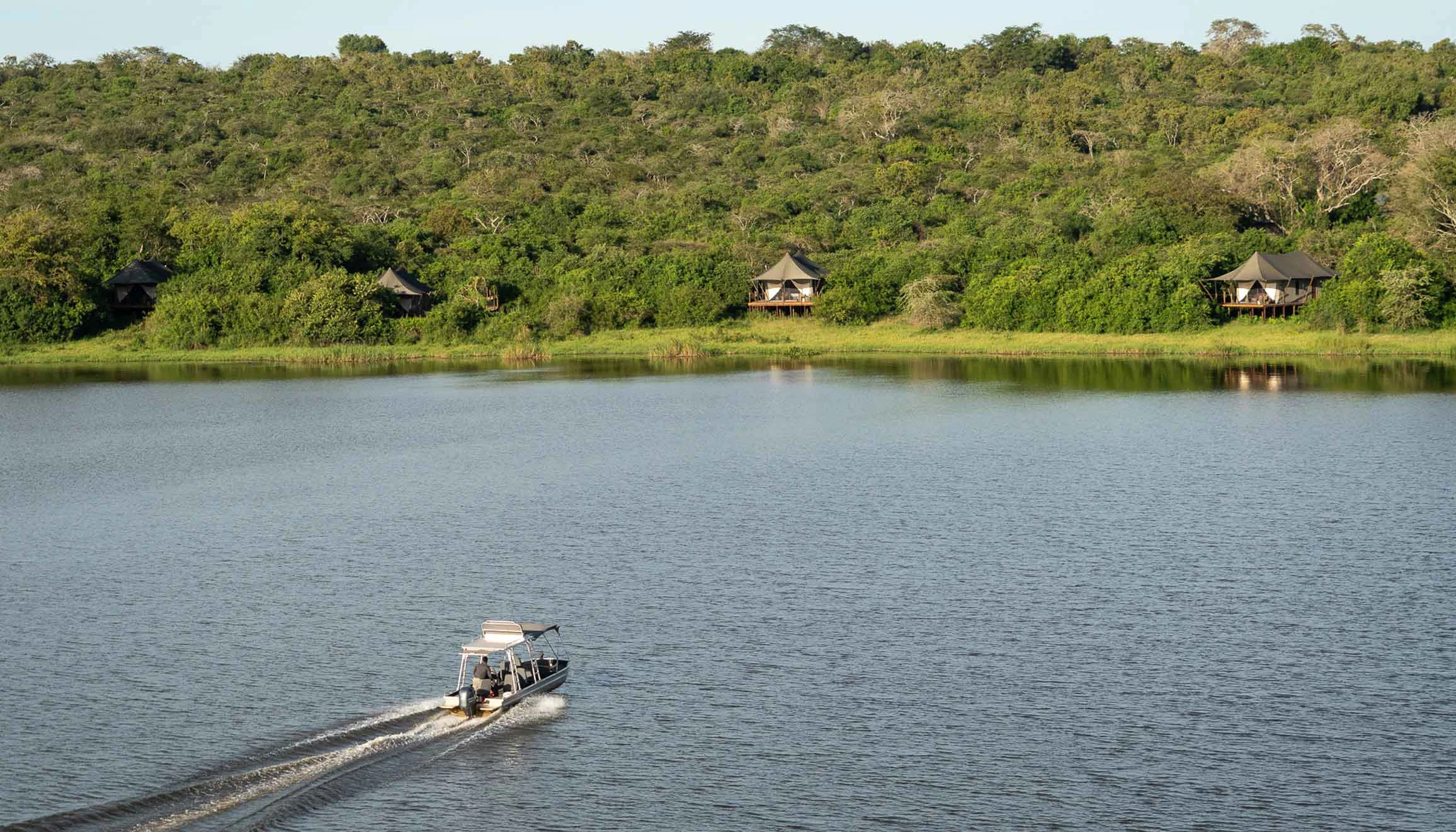
View wildlife from the water. (Photos: ©Magashi Camp)
Exclusive safari lodges in Akagera
Unwind each day at your intimate safari camp on Lake Rwanyakazinga to swap stories under the magnificent sky and listen to the lively sounds of the bush. The camp overlooks the vast savannahs and the waters of the lake, and is situated in the only private access area in Akagera, affording you miles of exclusive wilderness.
Beyond Akagera – extend your luxury safari in Rwanda
This memorable trip can also be combined with a gorilla trekking safari to see the mountain gorillas in Rwanda’s Volcanoes National Park, an enormous World Heritage Site filled with a rich diversity of animals and endangered species. Chimp trekking in Nyungwe Forest allows the opportunity to watch chimpanzees and L’Hoest’s monkeys. You’ll undoubtedly leave with magical memories of your time in one of the continent’s greatest parks and most inspirational conservation success stories.
Ready to take the road less travelled?
